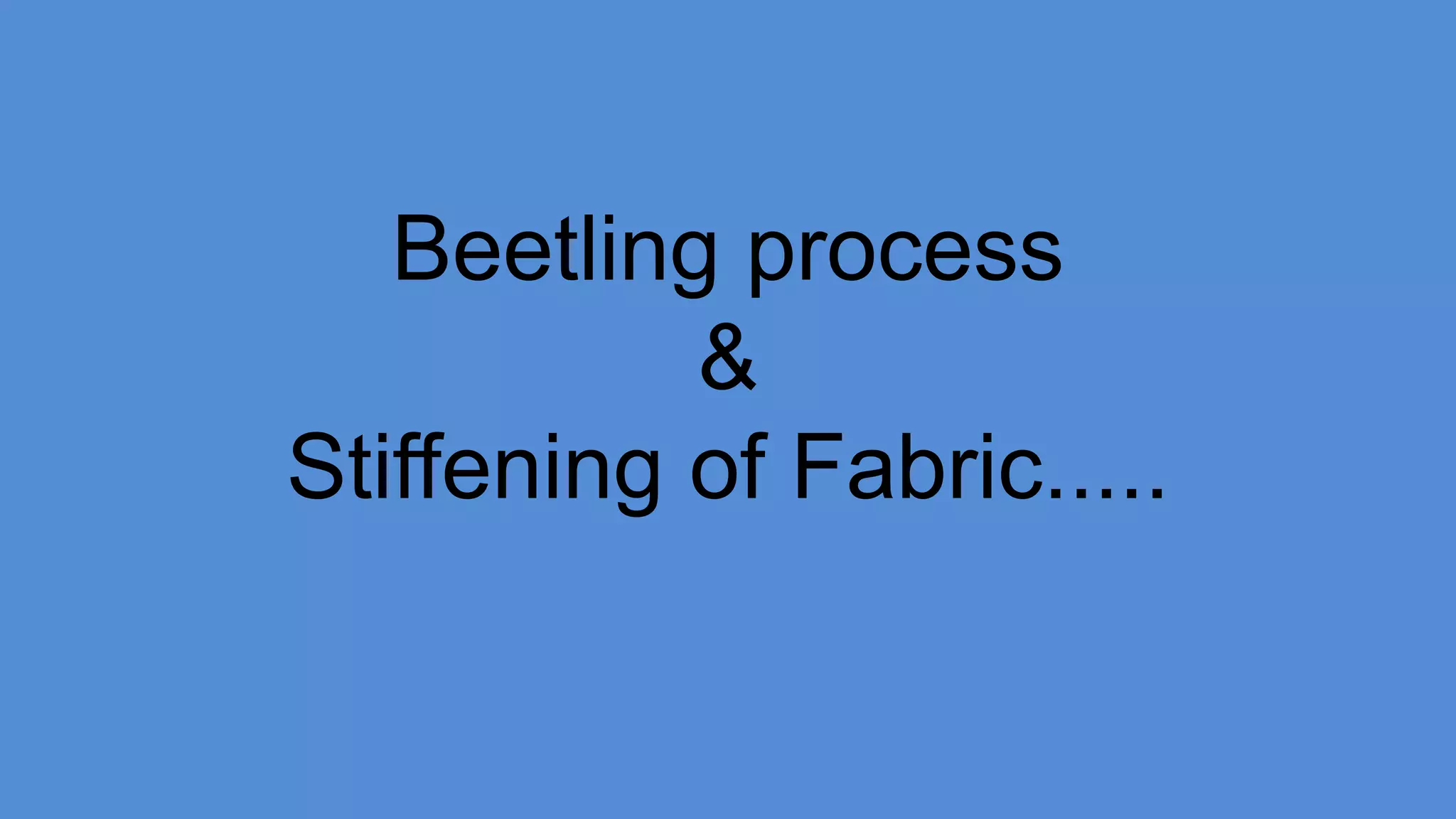This document discusses beetling and stiffening processes for linen and other fabrics. Beetling involves hammering linen with wooden blocks to flatten yarns and produce a smooth sheen. Stiffening involves applying polymeric coatings like starches, gums, or synthetic resins to fabrics to make them rigid. Natural agents for stiffening include starches, gums, and dextrins, while synthetic options are methyl cellulose, polyvinyl acetate, acrylates, and polystyrene. The document explains the methods and advantages of various stiffening techniques.






































